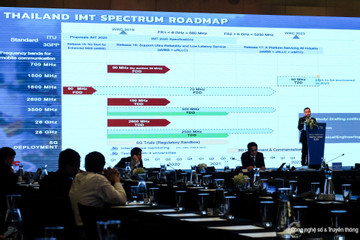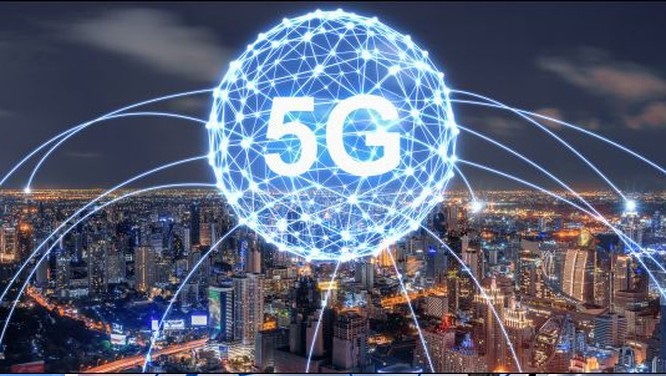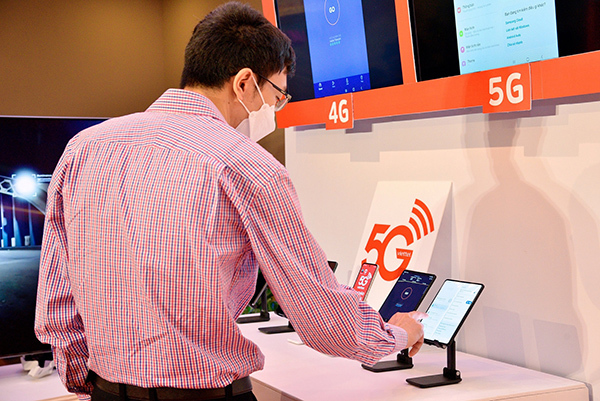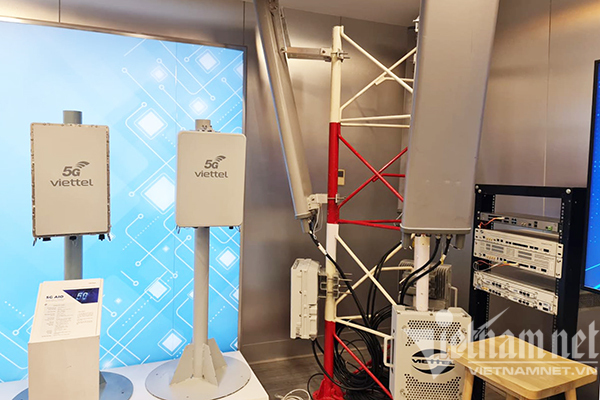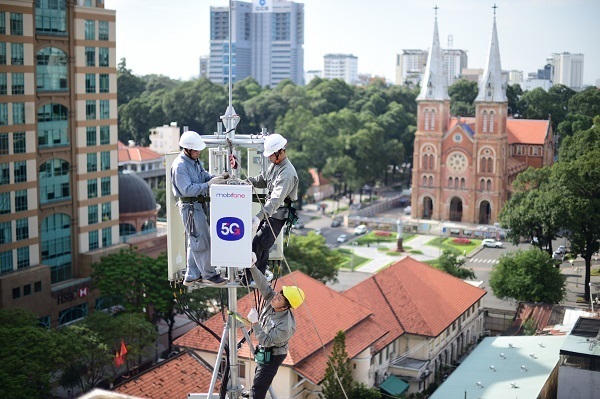- © Copyright of Vietnamnet Global.
- Tel: 024 3772 7988 Fax: (024) 37722734
- Email: [email protected]
5G
Update news 5G
How will telecom carriers fare in a highly competitive market?
The traditional telecom market is getting saturated and facing upheavals, including a drop in revenue from traditional calls and SMS, a tighter management policy and changes in technology.
Fostering national digital transformation
With Vietnam making new moves to accelerate digitally, the local tech market has become more appealing to international players over the past two years, with expansion intensifying in specific areas.
ASEAN officials, experts discuss 5G deployment trends
On October 11, the ASEAN Conference on 5G took place after the opening plenary session of the Vietnam International Digital Week 2022 (VIDW2022).
5G subscriptions in Southeast Asia and Oceania expected to double in 2022
5G subscriptions in Southeast Asia and Oceania were around 15 million at the end of 2021 and are expected to more than double during 2022, according to the latest edition of the Ericsson Mobility Report.
Groups gear up for cloud technologies
Cloud computing is strongly driving new business models in the media and entertainment industry, with more domestic and international cloud service providers boosting their footprint.
5G – breakthrough factor for Vietnam’s economic growth
The 5G services are projected to contribute 7.34 percent to Vietnam’s GDP growth in 2025, according to a research by the National Institute of Information and Communications Strategy.
The rise of MediaTek and lessons for Vietnam
Even though it launched rather late, MediaTek knows how to enter niche markets neglected by giants like Samsung, Apple or Qualcomm.
Vietnam to license 5G services in 2022
The Ministry of Information and Communications has set a challenging goal of increasing the number of digital technology businesses from 64,000 to 70,000 this year.
Vietnam ready for 5G commercialization
The Ministry of Information and Communications (MIC) has identified 5G service provision in 2022 via ‘Make-in-Vietnam’ devices as one core mission in its meeting to summarize tasks done this year and directions for 2022.
ESports could be lucrative for 4G, 5G service providers
As the telecommunication market is getting saturated, new content services such as livestream and e-sports are expected to help telecom carriers maintain growth.
Ministry wants to stop 2G, 3G in 2022, promote smartphone use
The Ministry of Information and Communication has proposed that Vietnam stop the use of 2G and 3G technologies from 2022 in an aim to encourage people to use smartphones and promote a digital society.
Driving growth and innovations with 5G
The contribution of 5G to Vietnamese GDP growth is forecast to reach 7.34 per cent by 2025, shown by research of the National Institute of Information and Communications Strategy at an online forum on digital transformation on Tuesday.
Free 5G mobile network launched in Da Nang
On December 13, Viettel’s 5G mobile network opened in Da Nang, providing free 5G service with unlimited capacity.
Vietnam, ASEAN countries meet to discuss 5G network plans
Many ASEAN countries are planning for 5G network frequencies. Each country has its own choice, so policymakers are looking for solutions to harmonize the spectrum in the region.
Sharing of infrastructure investments will speed up deployment of 5G network
Vietnam is expected to quickly develop the 5G network through an infrastructure sharing model.
Bandwidth rules increasing prospects across businesses
With Vietnam’s long-awaited new rules to increase bandwidth, fresh business models are launching for local mobile operators and international tech players to venture further in the 5G era.
ITU Ministerial Conference: Cost reduction is key for digital transformation
Access to low-cost technology was the topic of a discussion session of the ITU Ministerial Roundtable that took place on October 12-14.
4G and 5G frequencies to be licensed in Q4
In Vietnam, all three major carriers, Viettel, VNPT, and MobiFone are testing 5G and waiting for this frequency auction to officially provide services.
4G/5G frequency licenses to be granted to VN network operators soon
A decree on frequency auctioning is expected to be signed in the fourth quarter that will enable the Ministry of Information and Communications (MIC) to grant 4G/5G frequencies to telecom carriers.
5G testing in Vietnam reaches record-breaking speed
The 5G data transmission speed in a test conducted recently in Vietnam reached 4.7Gb/s, 40 times higher than 4G speed and two times higher than existing 5G speed.


